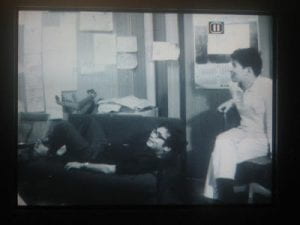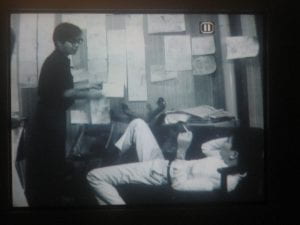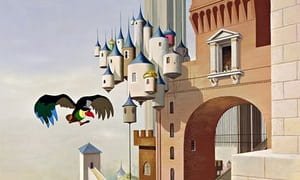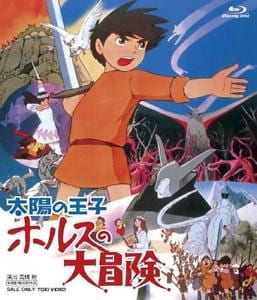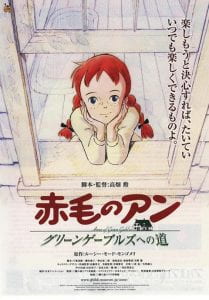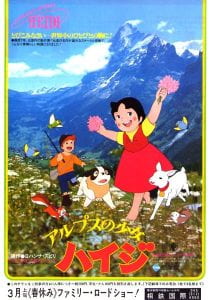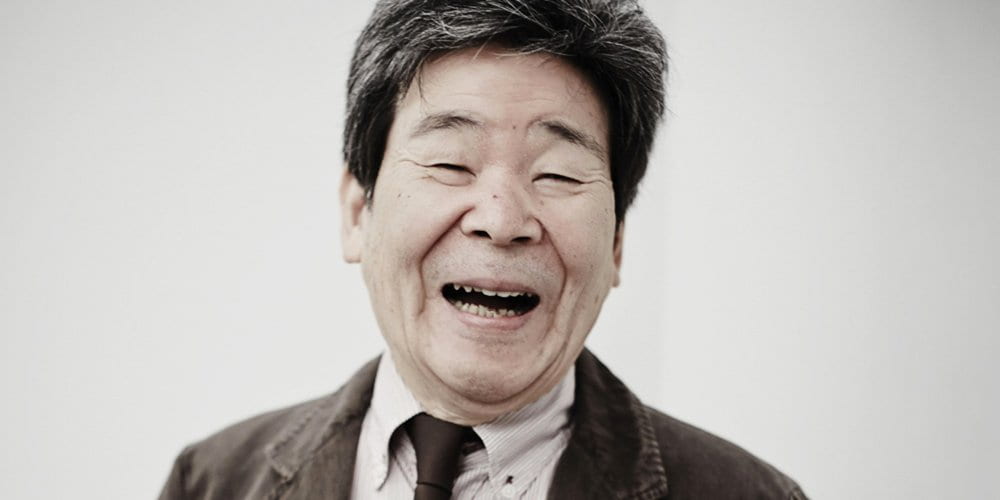
At the beginning of the making of the documentary for Isao Takahata’s final film, The Tale of Princess Kaguya, someone behind the camera (presumably one of the two directors of the documentary) asks Takahata “What kind of movie are you trying to make with Princess Kaguya?” Takahata sits fidgeting on a couch, hand combing through his hair and answers with an amused chuckle, “Does any director think about that? What kind of movie…” It becomes pretty clear that Takahata, while an absolute genius and craftsman of some of the most affecting stories told in both the 20th and 21st centuries, is not the type of artist we come to expect to work in the field of animation. Here sits a man in a medium that requires more pre-planning and as clear a vision as you need to make deadlines and he thinks “How am I supposed to know?” It’s not the thought of someone who’s incompetent or lackadaisical but of someone who spent their whole career having an anomalous creative process to his peers and in the end became someone who was so respected and original there is likely never to be another person like him.
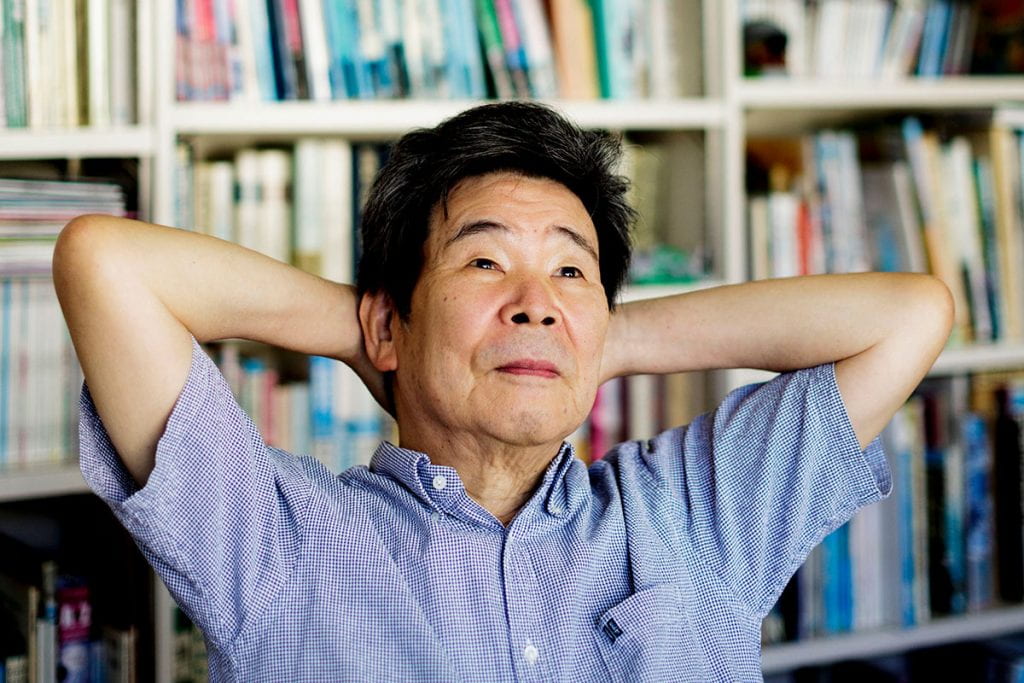
Isao Takahata, unlike so many others who work in animation, didn’t have a background in animation. He attended the University of Tokyo and graduated with a degree in French literature. He happened to see a French animated film titled The King and the Mockingbird during this time, which in turn sparked an interest in animation, though not in the medium’s creation but with its direction. He landed a job as an assistant director at Toei Animation (a studio most widely known in the Western world for their work on the animated adaptations of Akira Toriyama’s manga Dragonball and its follow-up, Dragonball Z), where he would meet and befriend the slightly younger Hayao Miyazaki, a man who’s as crucial and inextricable to Takahata’s life as he is to cumbersomely overshadowing it. Takahata also picked up the affectionate nickname “Paku-san” (paku paku being a Japanese onomatopoeia for flapping your lips while you eat, kind of like “nom nom” in English) because Takahata would run late every morning, hurrying into the studio gulping down water and wolfing down the bread he held in his mouth.
Takahata helmed his first feature-length film in 1968 titled The Great Adventure of Horus, Prince of the Sun with Miyazaki serving as a key animator. While the film has received critical acclaim it was a financial failure, which led to Takahata being demoted and ultimately deciding to leave Toei, with Miyazaki in tow. During this period Takahata would work at other studios and cut his teeth directing animated series such as Heidi, Girl of the Alps and an adaptation of Anne of Green Gables, both of which had grown out of a failed attempt to adapt Pippi Longstockings.
But in the early to mid-’80s, after Takahata’s work in television and Miyazaki’s first feature-length directorial debut, Lupin the Third: The Castle of Cagliostro, the two decided to partner once again to not only produce an adaptation of Miyazaki’s own manga Nausicaä of the Valley of the Wind, but to also start their own animation studio. With the help of Toshio Suzuki (the Bones to Takahata’s Spock and Miyazaki’s Kirk) and Yasuyoshi Tokuma, the legendary (and now bittersweetly in flux) Studio Ghibli was born.
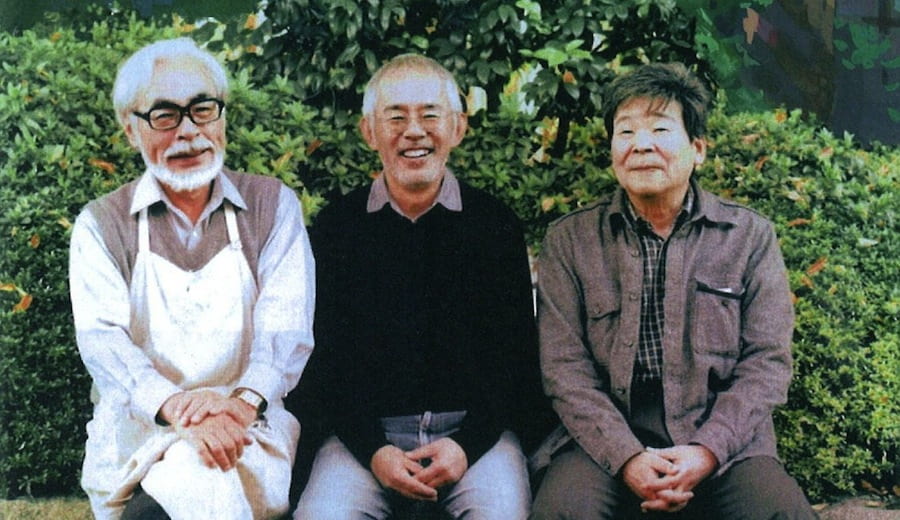
And for the most part, many of us know about Miyazaki’s many masterpieces and the welcome oddities like Ocean Waves and Whisper of the Heart, movies from the younger generation of artists trying to prove themselves in the overwhelming and traditional world of animation. Yet standing there the whole time was the quiet and frequently worn-looking Takahata making these wonderful humanist pieces amongst a sea of whimsy and fantasy. This isn’t to say that what others at Studio Ghibli were doing weren’t grounded in character and the human condition or that Takahata couldn’t deliver flights of fancy (watch Pom Poko and tell me the man isn’t just exploding with ideas), but Takahata set himself apart by really digging into the ugly and wonderful complexities of life.
His first film for Studio Ghibli, Grave of the Fireflies, has a reputation of being one of the saddest films ever made and to me I think that comes from the way he unflinchingly has the film from the POV of children in real situations they have no control over. Not in this way of wallowing in the horror of children being alone and feeling the effects of an air raid, but the quiet desperation of survival and not even knowing you don’t have the tools for it. The children struggle, briefly thrive, laugh, cry and vainly rationalize the same as any adult but without the power to do much. It’s perhaps one of the more bitter concepts human beings don’t like to think about when it comes to children.
The movie is an adaptation of the autobiographical short story by Akiyuki Nosaka but Takahata weaved in his own experience as a child of World War II and being affected by the air raids. This weaving of personal history and emotion into his films puts them apart from the broader films that were being made at Studio Ghibli at the time. To put it succinctly, My Neighbor Totoro could capture an audience’s heart and imagination; Grave of the Fireflies would cling to any individual’s soul who could bare to ingest it. This ability to personalize would serve him well in his modest filmography. When Miyazaki was approached about adapting the manga Only Yesterday, he was stumped by its episodic style. He handed the project over to Takahata who grasped on to the idea of making the vignettes of childhood flashbacks and having them revolve around and inform a newly added story about a 27-year-old woman struggling with the direction of her life as she goes to visit a family farm for the summer. Takahata drew on his own searching demeanor and nostalgia he had as a younger man, knowing that no matter the age, everyone looks back on who they were to inform what they want to be. If you want to talk about a film that clings to the soul, I watched this film on the eve of my 28th birthday and I don’t think I’ve stopped thinking about it since then. It refuses to let me go.
https://www.youtube.com/watch?v=x0ZrjocXVJ4
But with this film you can see another element of Takahata’s unique approach to filmmaking by the way he chooses to animate people’s smiles in this film. You can see the sharp angles of cheek bones and the unflattering but welcome squint of eyes. This wasn’t a common choice at the time, especially within Ghibli’s current house style which always opted for a more traditional smoothing-out of facial expressions. This would be the beginning of Takahata experimenting with each of his features. With Pom Poko you saw him using different drawing and animation styles to illustrate the changing of the shapeshifting Tanooki and their surroundings. His experimentation in his 1999 feature My Neighbor the Yamadas with using digital animation to keep the look of a comic strip put a huge strain on the studio due to him deviating from the tried and true cel animation the artists were used to. My Neighbor the Yamadas was a bomb and Takahata wouldn’t direct another feature for 14 years and it took 18 months of urging from his closest colleagues before he would muster the strength to agree to direct his planned final film and perhaps the greatest animated film of the 21st century, The Tale of Princess Kaguya.
Earlier I mentioned the interview with Takahata about what he wanted out of the film and how to him it’s almost an absurd question. Well, between that documentary and The Kingdom of Dreams and Madness (a film he’s only occasionally seen in, but spoken about with such reverence from everyone else involved), you get a pretty clear picture of how he could answer that way. The Tale of Princess Kaguya, along with other Takahata-directed pictures, was notoriously behind schedule. It was supposed to arrive in theaters along with Miyazaki’s own swan song (at the time at least), The Wind Rises, as a kind of full-circle event (Grave of the Fireflies and My Neighbor Totoro were released as a double feature in 1988). The Wind Rises would be released to critical acclaim and the buzz around Miyazaki’s retirement — an announcement that Takahata opted out of because, in the type of shade only best friends and rivals can employ, “why would you need to announce your retirement from directing?” — while The Tale of Princess Kaguya fell almost a year behind schedule and wouldn’t be released until 2014 with the same critical acclaim but not nearly the same amount of fanfare.
When you look behind the scenes you see that Takahata came up with the screenplay and voice actors for the film before he even attempted story boards, which is probably one of the most uncommon things you can do in animation. You can see him slowly sculpting the film around the actors and looking through cut after cut of the film. You see him employ for the final time another uncommon animation style that worried the animators, this time choosing a constantly shifting sketch style to capture the urgency and excitement of the film. As he puts it, “When you’re drawing fast there’s passion. With carefully finished drawing, that passion gets lost.” He took his time with selecting the music for the film, even when working with the world-famous composer and Ghibli regular, Joe Hisaishi, surprisingly for the first time. And when you consider Takahata’s sluggish disposition (in the afterward for the book Starting Point he reveals that Miyazaki teasingly says that he is “descended from a giant sloth”), you realize that what truly sets him apart from other animation-based directors is that lack of crystal-clear vision was both a weakness and an even greater strength. Takahata’s lack of foresight left him room to sculpt in time and make every wonderful and near-perfect choice he made for Princess Kaguya.
https://www.youtube.com/watch?v=QzeyWsy-RlE
That’s why I wanted to write about Isao Takahata. Because he stood out so much among the legends of his field yet somehow isn’t nearly as recognized. When I heard the news of his death, I expected social media and film websites to be lit up with fan art, tributes and think pieces about the maestro. He was Miyazaki’s friend and rival, Ghibli’s quiet, kindly uncle to Miyazaki’s stern and grumpy father, but also the author of multiple masterpieces that could only have been made by him. Instead I was met with muted mourning, but honestly it’s fitting. From every interview I read and every piece of footage I watched he seemed like he preferred the quiet impact his films had versus the halabaloo of the other Studio Ghibli films. I think he’d just be happy that anyone saw and enjoyed his films at all. I know I do and always will enjoy them. On sunny days, cloudy days, and rainy days.
…but preferably cloudy days.
Farewell, Isao Takahata.
Takahata’s Grave of the Fireflies was screened at the IU Cinema in 2016 as part of the series Chimerical Cinema: The Fantastic World of Japanese Animation.
Several other Studio Ghibli movies that have appeared at the Cinema include Kiki’s Delivery Service, Ocean Waves, The Red Turtle, My Neighbor Totoro, Ponyo, Spirited Away, and Princess Mononoke.
 David Carter is a film lover and a menace. He plays jazz from time to time but asks you not to hold that against him. His taste in movies bounces from Speed Racer to The Holy Mountain and everything in between.
David Carter is a film lover and a menace. He plays jazz from time to time but asks you not to hold that against him. His taste in movies bounces from Speed Racer to The Holy Mountain and everything in between.
